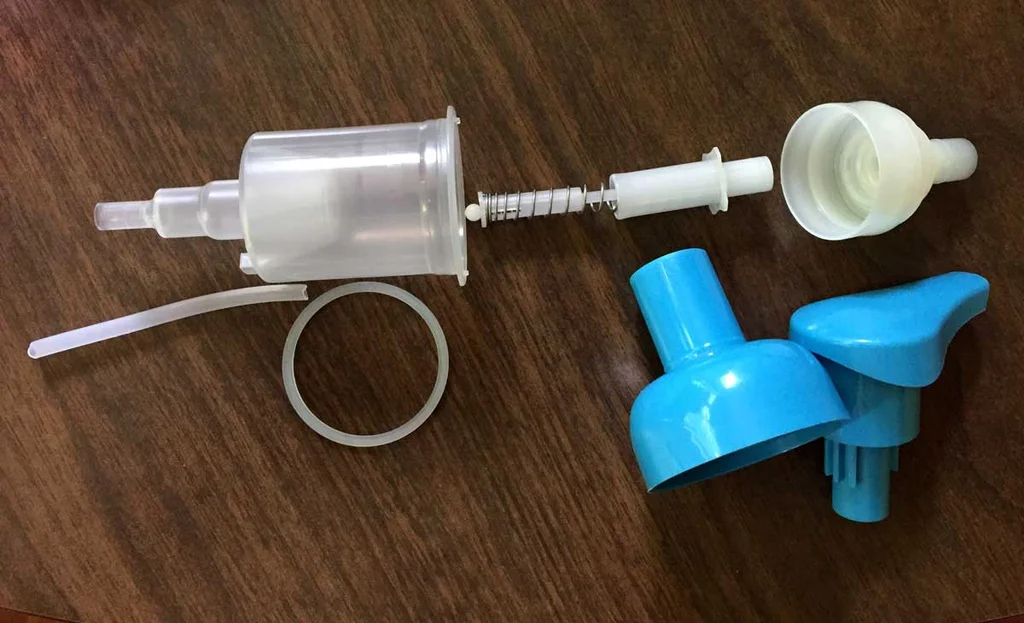So how does a lotion dispenser work like manufacturing lotion dispensers Connecticut? Several components work together to deliver the lotion. First is the pump, a removable mechanism that delivers the lotion product via a pumping action. Next, a dip tube connects the bottom of the bottle with the exit valve of the pump mechanism. The pump mechanism is then equipped with an actuator, a lever that moves to dispense the lotion. Pressing the actuator faster will increase the rate of dispensing.

Pump
A pump and a lotion dispenser use a dip tube and an actuator. These components are held in place in the housing. The pump moves the liquid from a dip tube into the actuator and ultimately to the user’s hand. The pump housing is generally made from PP plastic and can vary widely in size depending on how much product it can produce. Glass bottles can also be used, but they tend to have thicker side walls and may not fit inside the pump housing.
In operation, the pump is driven by a spring that goes the pump’s plug downward. This plug is then pulled into the pump, allowing the lotion to be drawn into the bottle. The pump has a guiding hole of 40 and an opening of 43 for the lotion to exit. The pump also shields the lotion from pollutants and contamination. In addition, the pump can be easily carried while traveling, making it ideal for trips. This dispenser also saves space in the washroom.
Actuator
The Actuator in a Lotion Dispenser acts like a pump and dispenses a small amount of lotion or other liquid product. When a consumer presses down on the actuator, the piston moves and compresses the spring, drawing the ball into the dip tube or chamber and pushing the lotion or other liquid into the container, this initial cycle is known as priming. It occurs every time the consumer presses the actuator.
The lotion dispenser’s pump is made of plastic and has an actuator on the top that allows the pump to operate. Many lotion pumps have a locking mechanism so that the pump will not accidentally discharge the liquid. The actuator is typically made of durable plastic, such as polypropylene. Its closure is either smooth or ribbed, so it is easier to open than a pump with a smooth surface. Actuators can also be molded in different colors so that users can choose the perfect color to match their decor.
Closure
A lotion dispenser has several different features. The top portion of the dispenser is called the actuator, which allows the lotion pump to operate. Many lotion dispensers are equipped with a locking mechanism. The actuator can be locked either in an upward or downward position. These dispensers are typically made of polypropylene, a strong, durable plastic. The lotion pump closure is either smooth or ribbed, depending on the style. Some pumps are fitted with sifter holes for easier access.
Viscous liquid
The viscous liquid in a lotion dispenser is the product of the pump in the hand lotion bottle. This hand pump uses compressed air to squeeze a bladder, forcing the viscous liquid out of the bottle. A pump can be horizontal or vertical. It can also rotate at any angle. The pump is operated with the hand or finger. The liquid is forced out of the bottle by releasing the compressed air.
A pump device is included in the refill reservoir assembly in one embodiment. This pump device can push the viscous liquid through a flexible delivery tube. The pump device is preferably an ordinary lotion pump that is modified to operate with the viscous liquid. The pump device may have a nozzle or a spout that extends from a reservoir. A pump device may also be integrated into the dispenser.
Lock up
Most people have heard of the lock-up lotion dispenser, which dispenses liquid by applying pressure to the nozzle. This dispenser features a high-up spout that sits above the main base unit and is operated by twisting the nozzle to unlock it and release the liquid. Lotion dispensers with lock-up functions are ideal for home use but are also useful in offices and public restrooms.






